Complete the following reactions:
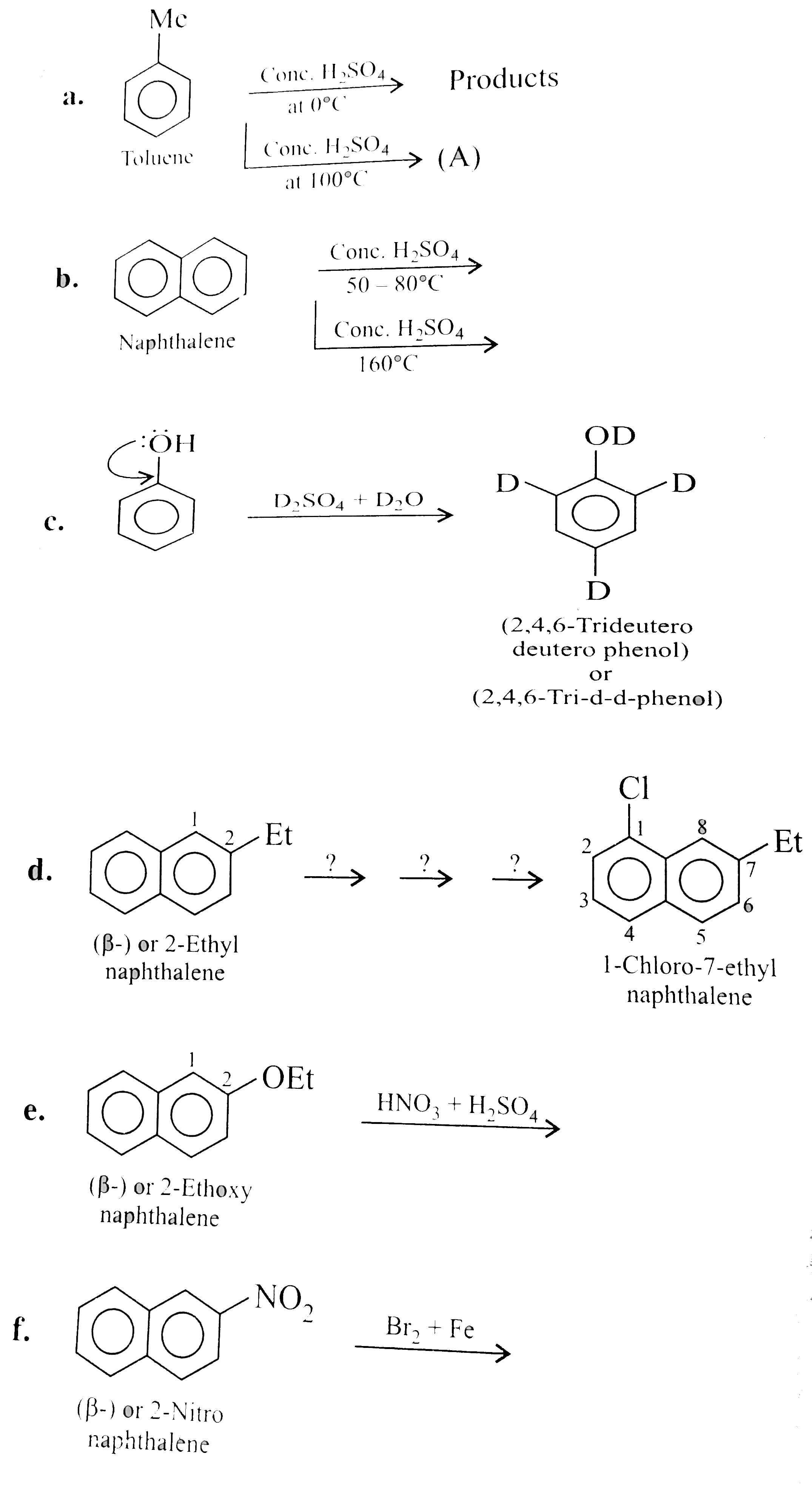
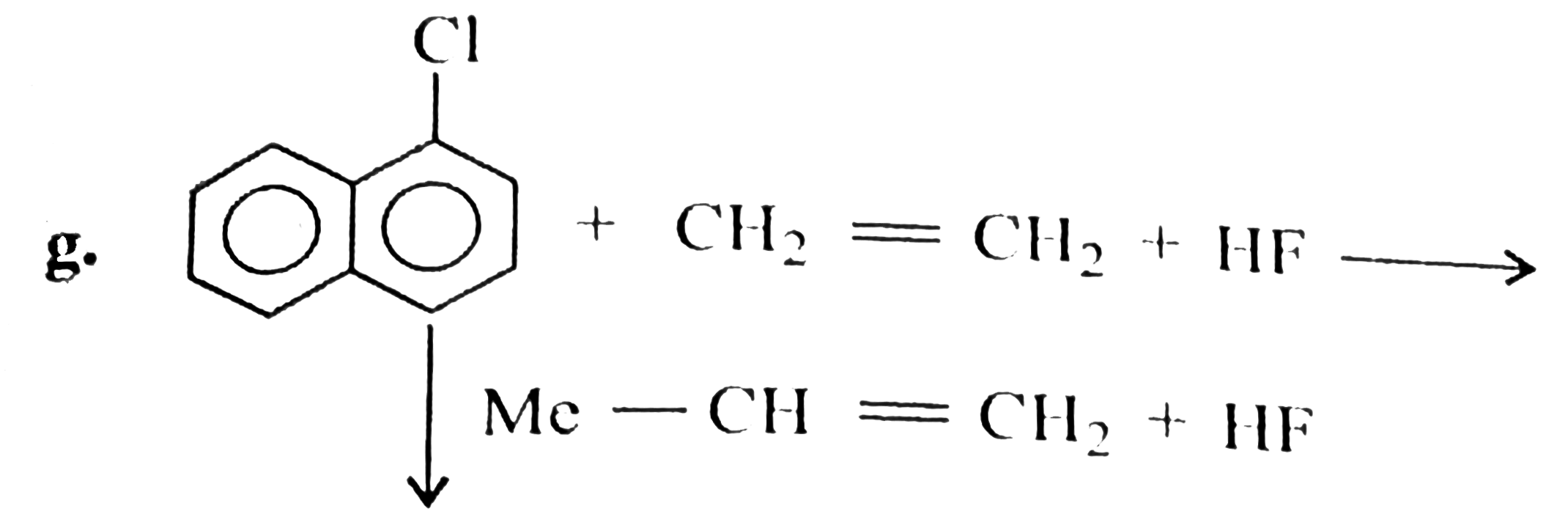
Text Solution
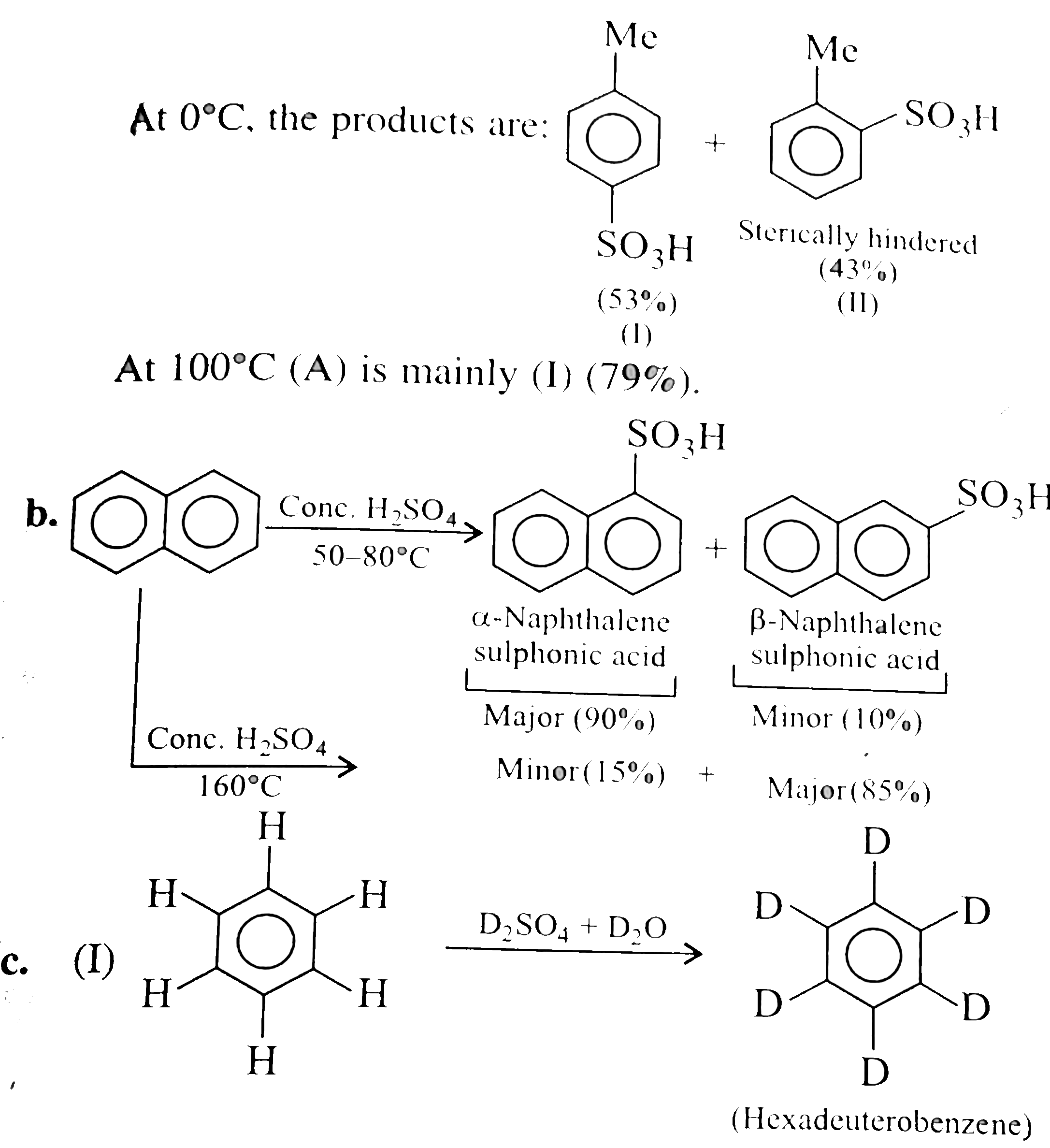
Since neither activating (EDG) nor the deactivating (EWG) substituent is present in benzene, so only the acidic H atoms are excharged by D.
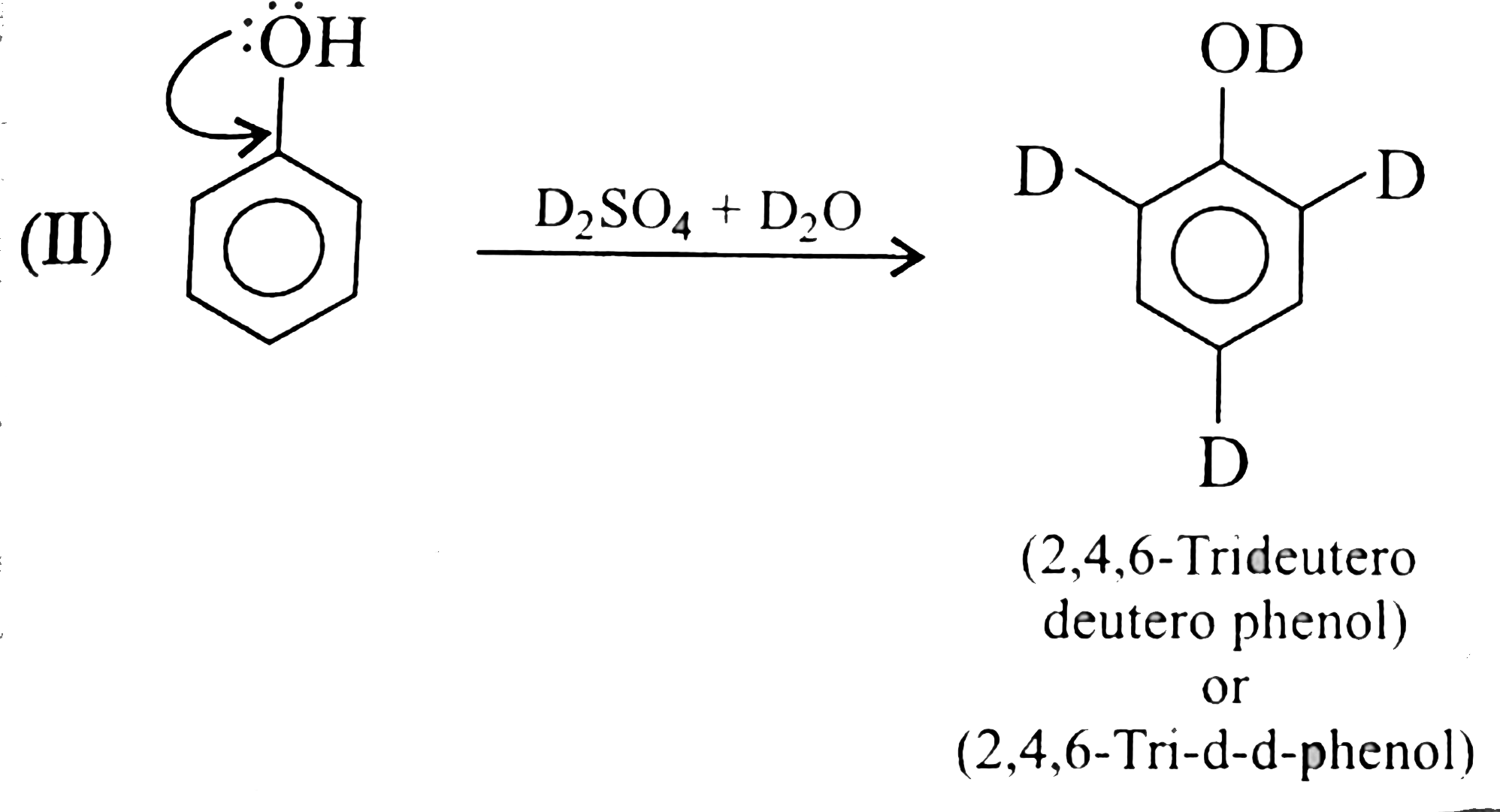
The (−PH) group is activating (EDG) by resonance, and ¯e withdrawing inductively, i.e., combined effect of +R and −I) and o− and p− directing. Moreover, phenol is acidic, therefore H of (−OH) is also exchanged by D.

Since (−SP3H) is deactivating no ring deuteration takes place, only acidic H of (−SO3H) is exchanged by D.
d. If direct halogenation is carried out, it will occur at C−1. Therefore, C−1 positon has to be blocked by sulphonation and then proceed for halogenation , whcih will occur in the secound ring, followed by desulphonation. This gives the desired products.
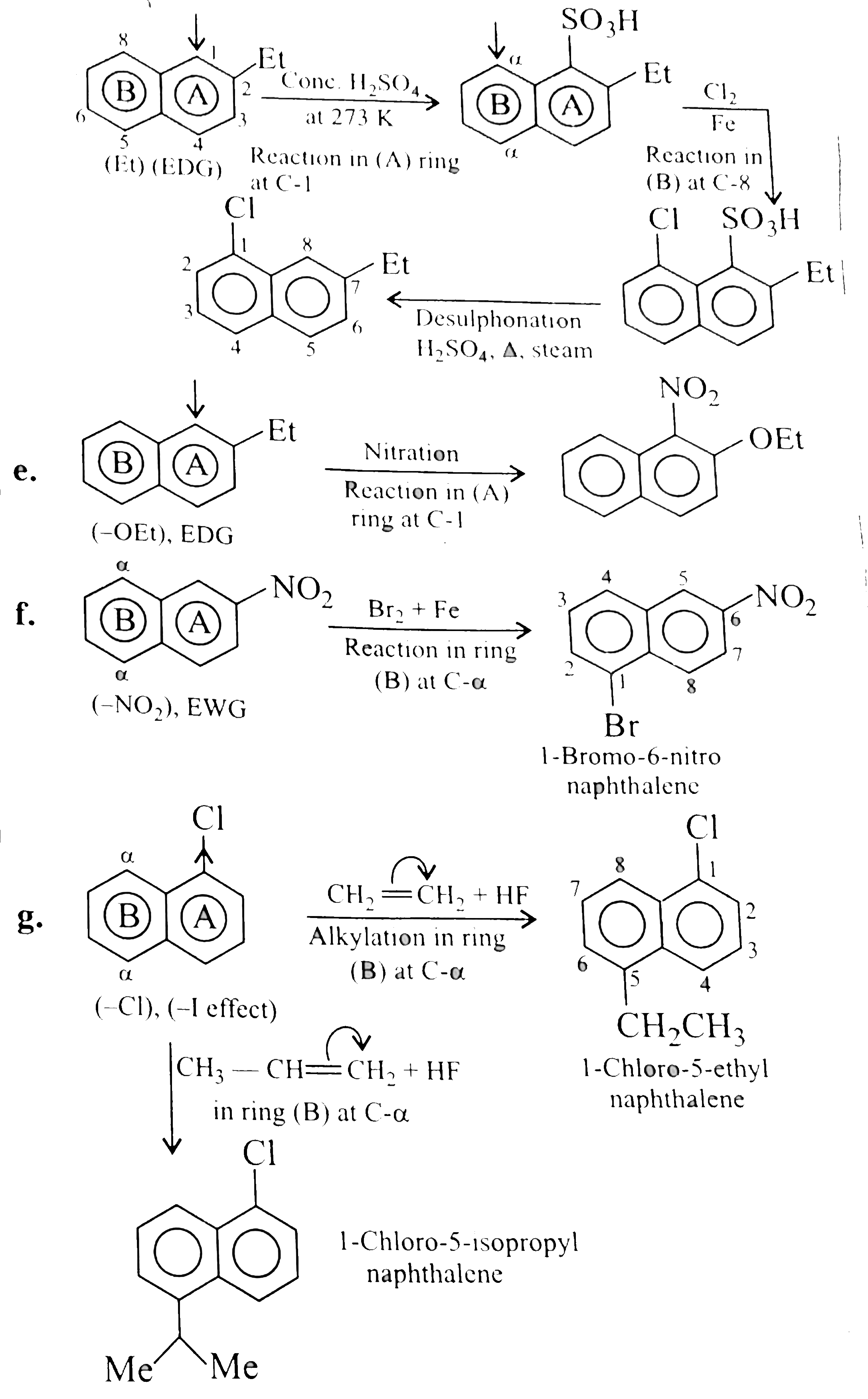
|
Topper's Solved these Questions
- AROMATIC COMPOUNDS AND ALKYL AND ARYL HALIDES BOOK - CENGAGE CHEMISTRY ENGLISHCHAPTER - AROMATIC COMPOUNDS AND ALKYL AND ARYL HALIDES EXERCISE - Solved Examples
21 Videos
- AROMATIC COMPOUNDS AND ALKYL AND ARYL HALIDES BOOK - CENGAGE CHEMISTRY ENGLISHCHAPTER - AROMATIC COMPOUNDS AND ALKYL AND ARYL HALIDES EXERCISE - Solved Problems
37 Videos
- APPENDIX INORGANIC VOLUME 2BOOK - CENGAGE CHEMISTRY ENGLISHCHAPTER - APPENDIX INORGANIC VOLUME 2EXERCISE - Short Answer Type
179 Videos
- BIOMOLECULESBOOK - CENGAGE CHEMISTRY ENGLISHCHAPTER - BIOMOLECULESEXERCISE - Exercises Archives (Analytical And Descriptive)
8 Videos

